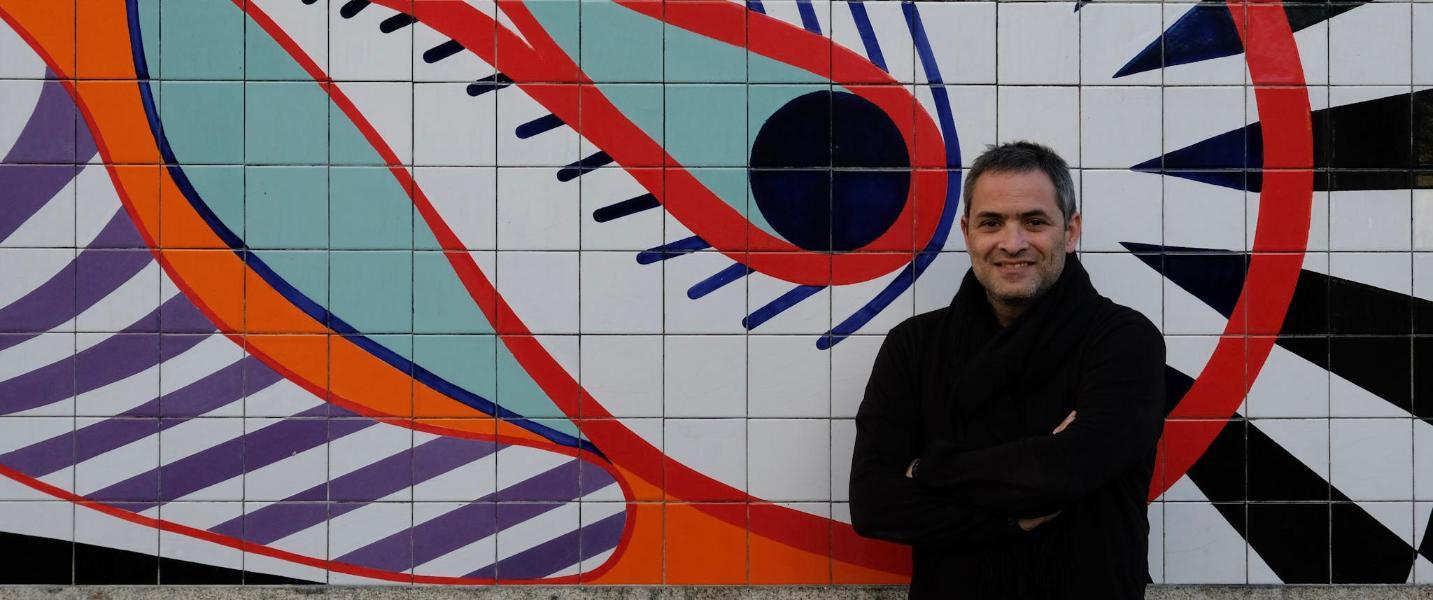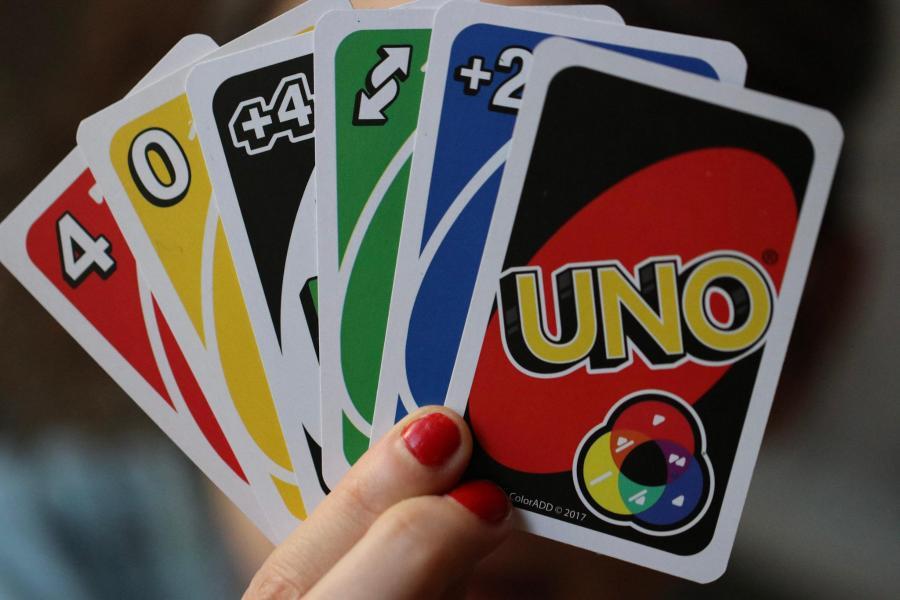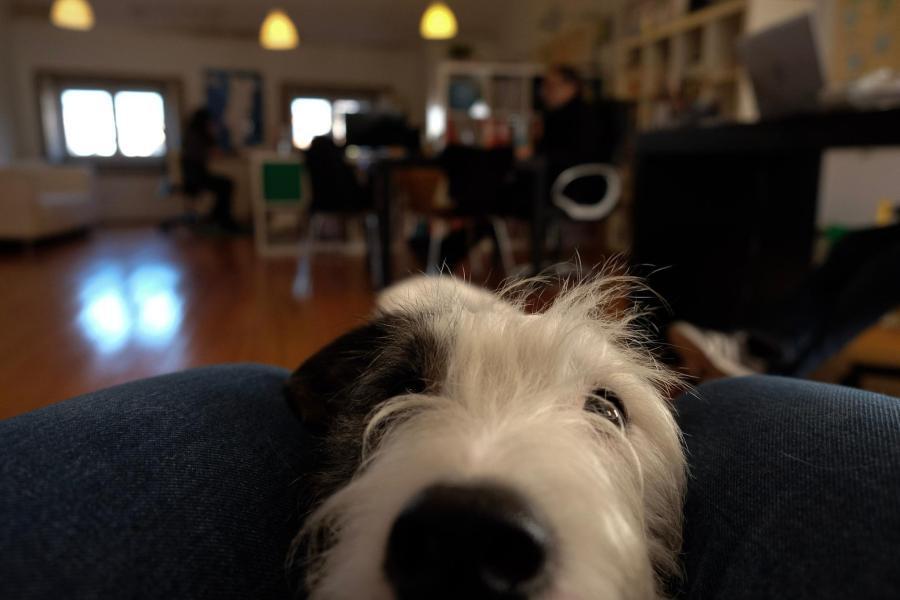
Miguel Neiva, founder of ColorADD, has already had some major successes for his invention. ©Chris Welsch
Miguel Neiva invented a language of symbols for the colour-blind to navigate colours
How could colour-blind people find out what the beach safety flags signify? And how could they put together a matching outfit, or avoid bullying at school for drawing green skies? A graphic designer, Miguel Neiva, came up with a solution.
Neiva always saw the world in colour, and saw those colours as vital tools in his work. Imagining how it would feel to lose the ability to see colour was a fearful prospect to him, and led him to investigate how colour-blind people navigate the vivid world that he took for granted.
“When I started doing research I found there was nothing — no system at all”, he said, throwing up his hands to show his bewilderment. “More than 350 million people are colour-blind but there was no help for them. I was looking for an idea for my Master’s thesis, and this became it.”
For Neiva, a 49-year-old native of Porto, Portugal, the project quickly became more than an academic exercise. For his Master’s thesis, at the Universidade do Minho, he developed a simple, symbolic language that can express the whole range of colours. After graduating with his Master’s degree in 2008, he has devoted himself to spreading that language globally, using a social business model with the long-term goal of distributing the system worldwide.
Neiva’s initiative is one of the past winners in the EIB Institute’s annual Social Innovation Tournament, which recognises and supports European social entrepreneurs whose primary purpose is to generate a social, ethical or environmental impact.
He works with a team of six employees in an open-plan office on the second story of a building in central Porto, across the street from his home.
Talking on a sunny day on the terrace of a restaurant nearby, Neiva said that the name of his invented language and his business, ColorADD, refers to the system of colour addition familiar to young students everywhere.
“When you are a child you learn that when you add two primary colours, like blue and yellow, you get a third colour: green”, he said.
The basic ColorADD language is neatly illustrated in its logo: there are three intersecting circles, each representing a primary colour, each represented by a symbol (opposite triangles and a line), and at the three intersections there are combinations of the three symbols, to indicate purple, green and orange. Beyond this basic structure, more complex combinations of the symbols represent various shades and hues. Because the language is entirely symbolic, it is easily interpreted by speakers of any language.
The global market for such a language is enormous. About 10 percent of the world’s men have some type of colour blindness. The condition is a result of a genetic deficiency in the X chromosome.
A game changer

This set of the UNO card game is colour-coded for the colour-blind, using the ColorADD system. ©Chris Welsch
The language has already had some major successes in tapping that market.
Major companies have licensed ColorADD, including Mattel, the multinational game manufacturing company. In 2017, Mattel introduced a ColorADD version of the world’s most popular card game, UNO, and sales spiked 66 percent in the first year.
“There are lots of different forms of colour blindness, so when we first looked into making UNO more inclusive for the colour-blind, we realised we couldn’t just change two colours of the deck,” said Ray Adler, senior director of global games for Mattel during an interview in 2017. “The ColorADD system is a relatively new system that is gaining a lot of traction around the world and which allows for all kinds of colour blindness.”
“Our partnership with ColorADD enables us to extend the game to the 350 million people globally and 13 million Americans who are colour-blind,” Adler said, as the new deck was announced.
ColorADD has also made strides with governmental institutions. Beach safety flags in Portugal now carry the ColorADD system, so colour-blind swimmers know when and where it’s safe to get in the water. Porto’s recycling and garbage containers are marked with ColorADD symbols, as are the city’s transit maps.
Neiva’s ultimate goal is to see the ColorADD system in use worldwide — on mass transit maps and vehicles, on traffic lights, even on clothing labels, so that a colour-blind person can put together a matching outfit with ease. He would also like to see the language taught more widely in schools, so that colour-blind kids don’t get bullied for their drawings with green skies or blue trees.
“It would be impossible to find the 350 million people who have colour blindness – most colour-blind people don’t want to be identified by their handicap; they don’t want to ask for help. So my goal is to reach all 7 billion people, and in that way, to guarantee inclusion without discrimination,” Neiva said.
Spreading the message

Miguel Neiva’s dog is an office favourite. The company’s goal is to see the ColorADD system in use worldwide — on mass transit maps and vehicles, on traffic lights, even on clothing labels. ©Chris Welsch
To reach this goal while also maintaining a viable business required some creative thinking. A copyright lawyer advised him that the best way forward was to share ColorADD as far and as wide as quickly as possible. This would make competition redundant.
To that end, Neiva has tried to make ColorADD as affordable as possible, charging a licensing fee that is scaled to size for for-profit businesses — Mattel pays more than Viarco, a Portuguese coloured pencil company, for example — and makes the system free to schools and other educational institutions through a non-profit arm.
ColorADD pursues growth by continuing to solicit companies that want to reach colour-blind customers and reaching out to colour-blind influencers who could help spread the word. Neiva dreams of getting the attention of Facebook founder Mark Zuckerberg.
“He can’t tell red from green; that’s why Facebook is blue. It’s the colour he sees best,” he explains. He therefore hopes Zuckerberg could help ColorADD reach a lot more people.
“We will continue scaling up, finding ways to co-create with big players, helping to create success so that others want to join the effort,” he said. “In this way, we can guarantee a more colourful future for all.”
Author: Chris Welsch
Source: Bringing colour to those who can’t see it, taken with the kind permission of the EIB Institute
***
Every year since 2012, social entrepreneurs from different parts of Europe have been competing in the Social Innovation Tournament, directing their efforts and creative minds towards creating unique solutions to everyday problems that are often overlooked. These entrepreneurs have helped marginalised groups, they have engineered solutions to save energy, and they have created communities that empower their members.
EIB Institute will publish these stories in which the entrepreneurs discuss their motivation behind each project, their hopes and ambitions, and their efforts to overcome the hurdles of social entrepreneurship.
Through their projects, they have found their way of creating positive change in this world. How will you become a change-maker? Read these stories and find your inspiration.
 Government of the Republic of Serbia
Government of the Republic of Serbia















 pdf [271 KB]
pdf [271 KB]
Leave a Comment